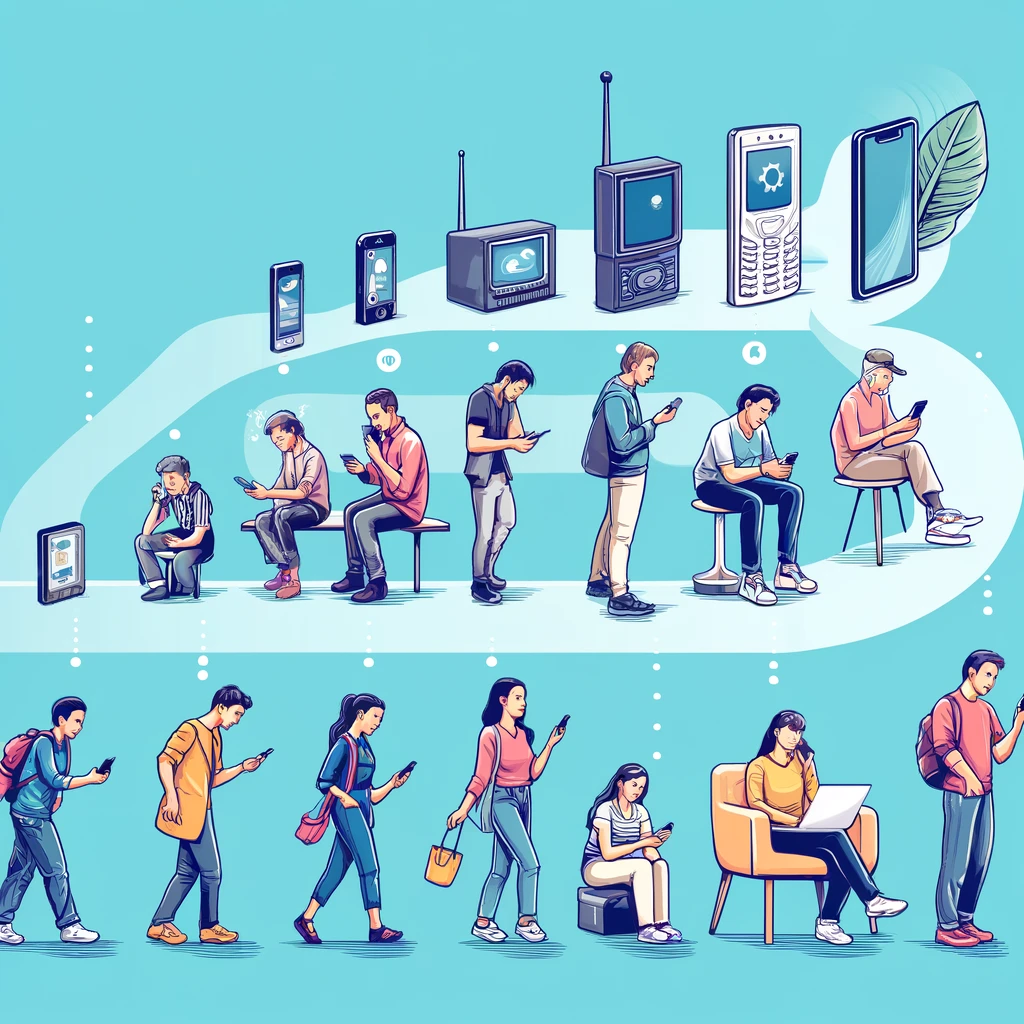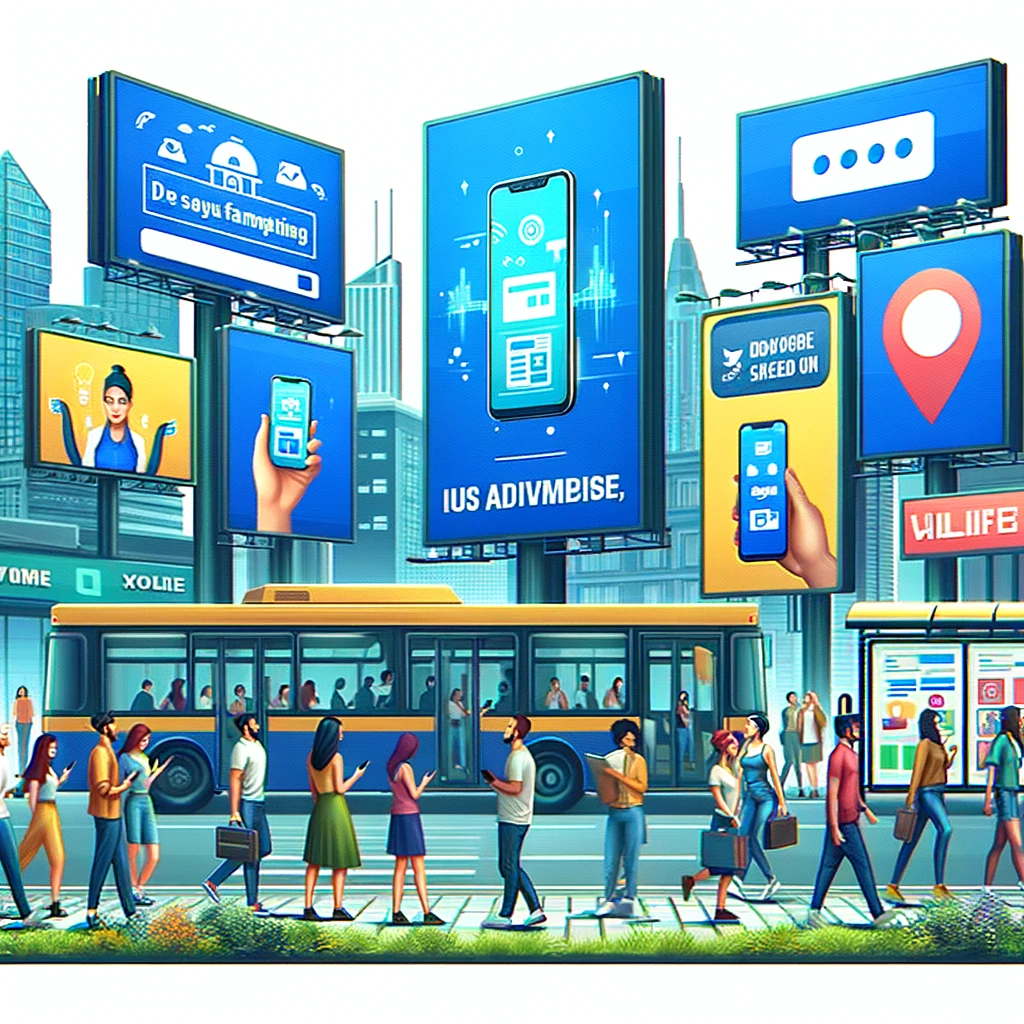
Navigating the Current and Future Landscape of Mobile Marketing
Introduction: The Ever-Evolving World of Mobile Marketing
In an age where smartphones are an extension of ourselves, the landscape of marketing has evolved to fit into the palm of our hand. Mobile marketing, once a niche in the broader spectrum of digital marketing, has burgeoned into a vital strategy that no business can afford to ignore. As we dive deeper into the intricacies of mobile marketing, it's clear that understanding its evolution isn't just about tracing the technological advancements but about capturing the shifts in consumer behavior that these technologies have ushered in.
The essence of mobile marketing lies in its immediacy and intimacy—qualities that are unparalleled in any other marketing medium. Today, it provides a direct line to the consumer, offering not only a means of communication but a portal into their preferences, habits, and daily routines. As we explore the current state of mobile marketing, we'll uncover the strategies that top brands are using to captivate audiences. Furthermore, we'll delve into the emerging trends shaping its future and the predictive analytics that are set to redefine how marketers understand and engage their audiences.
Part 1: The Current State of Mobile Marketing
Overview of Mobile Marketing
Mobile marketing encompasses a range of tactics designed to engage users via their mobile devices. This includes SMS and MMS messaging, mobile apps, email, social media, and more recently, augmented reality experiences—all tailored to handheld devices. The ubiquitous nature of mobile phones offers marketers a unique opportunity to reach audiences anywhere and at any time.

Key Strategies and Tools
The arsenal of mobile marketing is vast, but some strategies are particularly effective in today’s digital ecosystem:
- SMS and MMS Campaigns: Quick and direct, these campaigns boast high open rates compared to emails.
- Mobile-Optimized Websites: With the majority of users accessing the internet via mobile, a mobile-first approach in web design is crucial.
- App-Based Marketing: Whether through ads, in-app purchases, or tailored content, apps provide a rich medium for personalized marketing.
Popular tools that help streamline these processes include platforms like HubSpot for inbound marketing, Hootsuite for social media management, and Google Analytics for real-time data tracking.
Engagement Techniques
Engaging customers on mobile isn’t just about reaching out; it’s about reaching out effectively. Personalization is key. Here’s how brands are doing it:
- Location-Based Marketing: Push notifications sent when a customer is near a store can increase foot traffic and sales.
- Personalized Content: Algorithms that suggest products based on past purchases make the shopping experience smoother and more customized.
Case Studies
Consider the success of Starbucks' mobile app, which integrates rewards and makes ordering convenient, driving significant sales. Similarly, Nike’s SNKRS app keeps enthusiasts engaged with exclusive releases and content, demonstrating the power of niche marketing.
These examples underscore the importance of a well-thought-out mobile strategy that resonates with the technological and personal habits of consumers.
Part 2: Emerging Trends in Mobile Marketing
As technology evolves, so too does the landscape of mobile marketing. Emerging trends are not just reshaping existing strategies, but also introducing new opportunities for marketers to engage with their audiences in innovative ways. Let's explore some of the most promising trends currently making waves in the industry.

Artificial Intelligence (AI) and Automation
Artificial intelligence is transforming mobile marketing by enabling more personalized, efficient, and insightful campaigns. AI-powered chatbots on mobile platforms can handle customer inquiries round the clock, providing instant responses that enhance user experience. Automation tools can also tailor content delivery to individual user behavior, predicting what content will be most engaging to which users at optimal times.
Augmented Reality (AR) and Virtual Reality (VR)
AR and VR are taking mobile marketing to immersive new heights. Brands are using AR to allow consumers to visualize products in their own space before purchasing, like IKEA's Place app, which lets users see how furniture looks in their home via their smartphone. VR offers even deeper engagement, with virtual store tours and product demos that enhance the consumer experience beyond the physical world.
Voice Search Optimization
With the rise of voice-activated assistants like Siri, Alexa, and Google Assistant, optimizing for voice search has become crucial. Voice searches tend to be more conversational and can differ significantly from typed queries. This shift requires marketers to rethink their SEO strategies to include more natural speech patterns and question-based phrases, which are commonly used in voice searches.
Ephemeral Content
Ephemeral content, which disappears after a short duration, taps into the user’s fear of missing out (FOMO). Platforms like Snapchat and Instagram Stories are popular venues for such content, encouraging more spontaneous and frequent interactions. Brands using ephemeral content can drive engagement by offering time-limited offers and exclusive sneak peeks.
These emerging trends highlight how mobile marketing continues to evolve, driven by technological advancements and changing consumer behaviors. By staying ahead of these trends, marketers can not only keep pace with the competition but also engage with their audiences in more meaningful and effective ways.
Part 3: Future Predictions for Mobile Marketing
The future of mobile marketing promises to bring even more significant transformations, fueled by advancements in technology and shifts in consumer expectations. Let’s explore some of the most anticipated developments that are poised to reshape the mobile marketing landscape.

5G Technology
The rollout of 5G technology is set to revolutionize mobile marketing by dramatically increasing internet speeds and connectivity. This will allow for more complex and immersive marketing experiences, such as enhanced AR and VR features, without technical limitations. Faster loading times and improved responsiveness are expected to boost user engagement and retention rates.
Internet of Things (IoT)
The Internet of Things extends mobile connectivity beyond traditional devices to everyday objects, from wearable tech to kitchen appliances. This expansion will provide marketers with a broader array of touchpoints for interacting with consumers. For example, a smart fridge could serve as a new venue for delivering personalized ads based on the contents of the fridge.
Privacy and Data Security
As technology advances, so too do concerns about privacy and data security. Consumers are becoming more aware of and sensitive to how their data is collected and used. In response, marketers will need to prioritize transparency and data protection to maintain trust. This shift will likely lead to more opt-in and privacy-focused marketing strategies.
Predictive Analytics
Advances in predictive analytics will enable marketers to anticipate consumer needs and behaviors more accurately than ever before. By analyzing data from various sources, marketers can identify patterns and trends that inform more effective targeting strategies. This could lead to highly personalized marketing that anticipates what a consumer needs before they even know it themselves.
These predictions suggest that the future of mobile marketing will be characterized by more personalized, immersive, and secure consumer experiences. As technology continues to advance at a rapid pace, marketers must remain agile, continuously adapting to stay ahead of the curve.
Part 4: Preparing for the Future
As mobile marketing continues to evolve, staying adaptable and informed is crucial for marketers looking to succeed. Here are strategies and resources that can help professionals prepare for the inevitable shifts in the mobile marketing domain.

Adapting to Changes
Staying adaptable involves several key strategies:
- Continuous Learning: The field of mobile marketing is fast-paced, requiring marketers to stay on top of the latest technologies, trends, and consumer behaviors. Engaging in ongoing education through courses, webinars, and conferences is essential.
- Agile Methodology: Implementing agile methodologies in marketing teams can help businesses remain flexible and responsive to changes in the market. This approach emphasizes iterative processes, continuous feedback, and adaptive planning.
- Experimentation: Embracing experimentation allows marketers to test and learn from different strategies, tools, and channels. This not only enhances understanding of what works but also prepares teams for rapid pivots as needed.
Skill Development
The future of mobile marketing will demand a blend of technical and creative skills:
- Data Analytics: Understanding and interpreting data will be more crucial than ever, as mobile marketing becomes more driven by predictive analytics and AI.
- Tech Savviness: Familiarity with the latest technologies, such as AR, VR, and IoT devices, will enable marketers to create more engaging and innovative campaigns.
- Privacy Management: As consumer concerns about data privacy grow, skills in managing privacy settings, understanding regulatory requirements, and implementing secure marketing practices will become increasingly valuable.
Resource List
To stay updated and refine the necessary skills, here are some resources marketers should consider:
- Books:
- "Mobile Marketing: Finding Your Customers No Matter Where They Are" by Cindy Krum
- "The Art of Mobile Persuasion" by Jeff Hasen
- Courses:
- Google’s Mobile Marketing Certification
- Udemy’s Advanced Mobile Marketing course
- Platforms:
- HubSpot Academy for various free marketing courses
- LinkedIn Learning for courses on digital marketing trends and tools
Networking and Community Engagement
Finally, staying connected with other marketing professionals through forums, online communities, and professional groups can provide insights and support as the landscape evolves. Participating in industry groups and attending conferences not only helps in networking but also in exchanging valuable knowledge and strategies.
Conclusion
The journey through the current state, emerging trends, and future predictions of mobile marketing reveals a dynamic and rapidly evolving field. Marketers who are proactive in adapting to changes, eager in acquiring new skills, and diligent in engaging with the community are the ones who will thrive. As mobile devices continue to weave themselves into the very fabric of daily life, the opportunities for marketers to connect with audiences in meaningful and impactful ways will only grow. Embracing these opportunities with creativity and strategic foresight will pave the way for success in the ever-changing realm of mobile marketing.
